
Lot 228
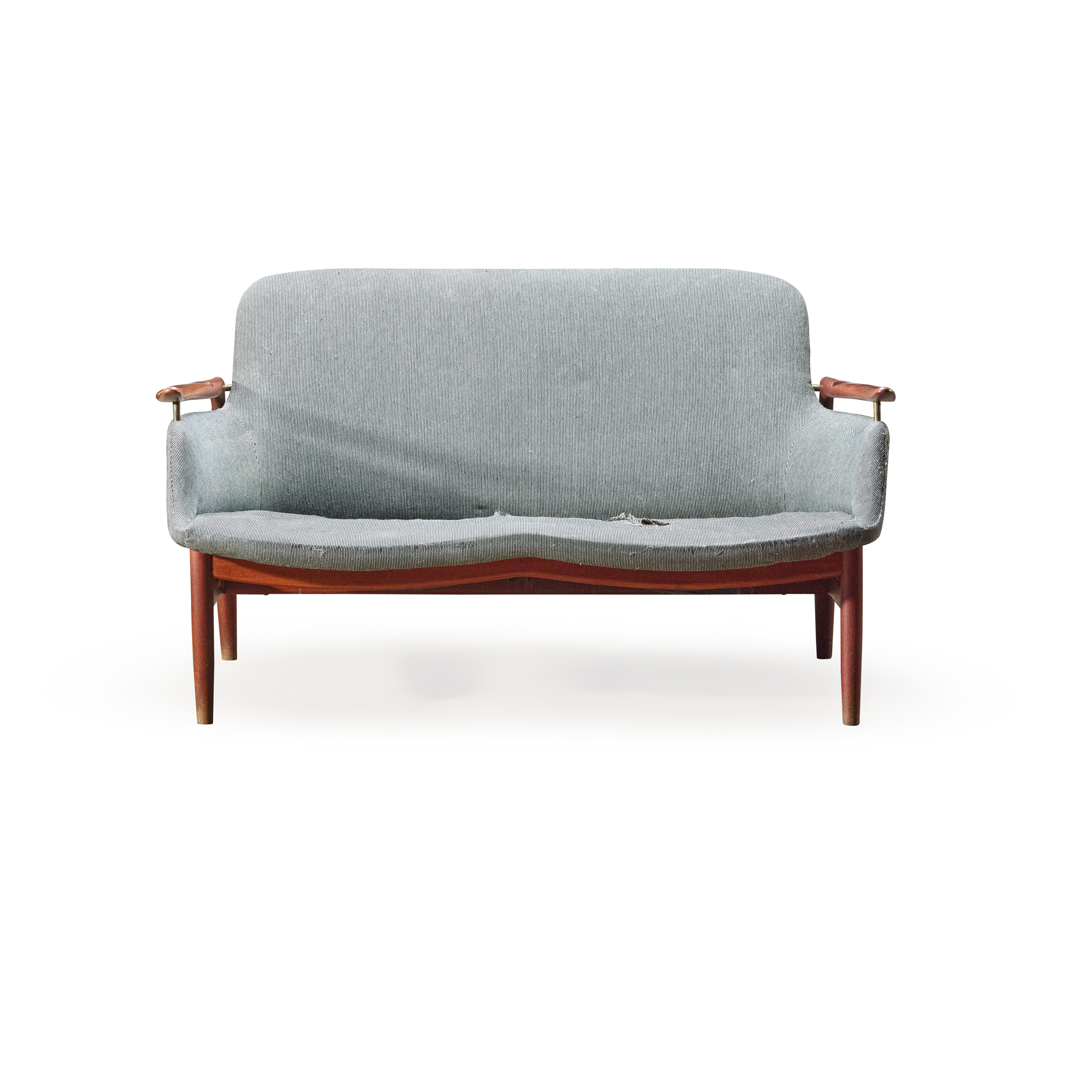
FINN JUHL (DANISH 1912-1989) FOR NIELS VODDER
SETTEE, DESIGNED 1953
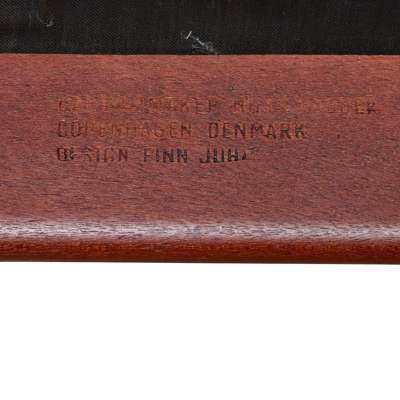
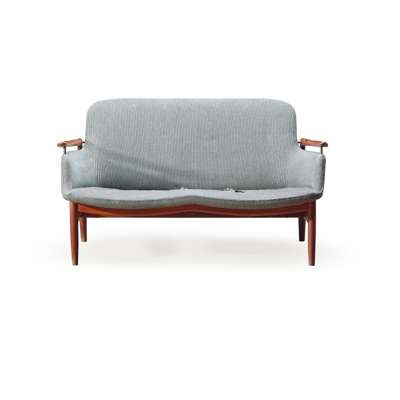
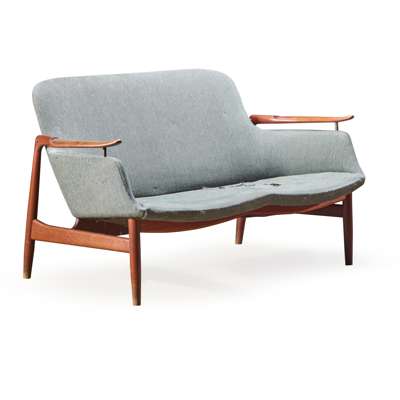
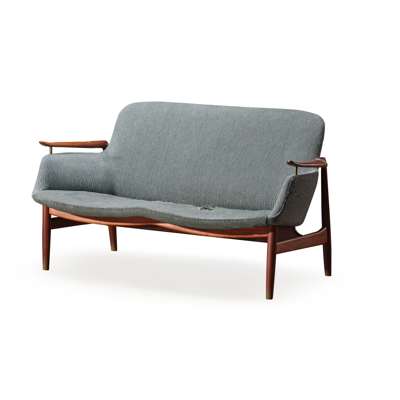
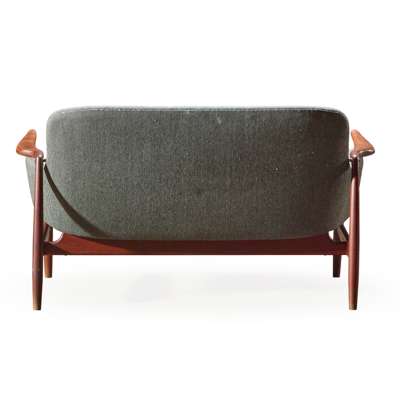


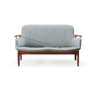
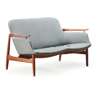
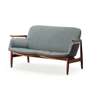
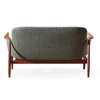
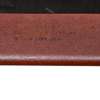
Auction: Day Two | Lots 100 to 527 | Fri 31 October from 10am
Description
model NV53, stamped Cabinetmaker Niels Vodder / Copenhagen / Denmark / Design Finn Juhl, teak, upholstery and brass
Dimensions
72cm high, 129cm wide, 70cm deep (28 3/8in high, 50 ¾in wide, 27 ½in deep)
Provenance
Private Collection, U.K.
Footnote
Finn Juhl: Form, Space & Comfort
"One cannot create happiness with beautiful objects, but one can spoil quite a lot of happiness with bad ones." — Finn Juhl
Finn Juhl (1912–1989) transformed furniture into sculptural presence with pieces that read as art at first glance, and as design on closer encounter, rewarding the sitter with exceptional comfort. In his practice he was at the forefront of lifting Danish design to international recognition in the years following the Second World War.
In Juhl’s furniture, the influence of abstract modernist sculptors such as Barbara Hepworth, Henry Moore, and Jean Arp is evident, serving as clear sources of inspiration. At the heart of his practice was the fusion of artistic expression with design, where aesthetic refinement and creative freedom met. In the post-war years, this distinctive approach made him a favourite among discerning artists, designers, and architects, among them the cosmopolitan Gordan and Ursula Bowyer, with whom he was personally acquainted and from whose collection several of the present works originate. As he once reflected, “A chair is not just a product of decorative art in a space, it is a form and a space in itself.”
The following works bring together a selection of some of Juhl’s most significant furniture designs as realised by the ateliers and manufacturers with whom he forged lasting relationships: Bovirke, Niels Vodder and France & Son. Together these works of art illustrate distinct phases of Juhl’s career: the early post-war experiments in lightness and biomorphic form, the mature 1950s works that captivated international audiences, and the precisely crafted production models that carried his aesthetic into private homes and institutions.
Finn Juhl’s work has long been celebrated for its sculptural clarity, expressive use of structure and seamless interplay between form and function. A series of works from the 1940s and 50s illustrates the breadth of his achievement, each design articulating a different dimension of his vision while together forming a coherent language that defined Danish modernism. The Japan series, and in particular the Japan Chair (Lot 53), reflects Juhl’s dialogue with non-Western sources, its elegantly exposed frame and carved-panel backrest distilling his interest in “the carried and the carrying” into a compact, quietly assured composition. By contrast, the Fireplace Chair (Lot 226), developed in the mid-1940s for Bovirke, embodies his early post-war breakthrough. Here the generous arm profiles, cross-stretcher frame and “paper-knife” detail convey a relaxed grandeur, demonstrating Juhl’s ability to combine cabinetmaking tradition with a cinematic sense of proportion.
Collaboration with master craftsmen was central to Juhl’s method, and nowhere is this more evident than in his partnership with Niels Vodder, whose initials are immortalised in the NV53 series. The chairs and settee of this family (Lots 227 and 228) achieve a balance between enveloping upholstery and the visual lightness of a refined wooden frame, revealing the technical sophistication that lay beneath Juhl’s fluid silhouettes. Ornament, when it appeared in his work, was typically sparing but deliberate: the so-called Judas Table (Lot 54), with its inlaid sterling-silver discs, exemplifies his ability to imbue functional objects with a note of theatricality that remains understated rather than ostentatious. This sensitivity to scale carried through to larger commissions such as the BO64 sofa (Lot 232), where the wooden framework supports the upholstery with the same sculptural poise found in his single chairs, but reimagined as a communal, room-defining presence. Its biomorphic contours further reveal the influence of contemporary sculptors he admired, including Jean Arp and the Icelandic artist Sigurjón Ólafsson. By the mid-1950s, Juhl had also begun to adapt his language to industrial production, most notably with the France Chair (Lot 59) for France & Son. Retaining his distinctive “floating” seat and back while answering the demands of export markets, it demonstrated how his vision could be carried to an international audience without loss of integrity. Taken together, these works affirm Juhl’s place as both an innovator and a mediator between craft, artistry and industry, qualities that ensured his influence within Denmark and far beyond.
The present works offer more than a survey of a single designer’s oeuvre: they map a sensibility that privileged organic line, meticulous workmanship, and a humane idea of modern comfort. Whether realised in small batches by master joiners or produced for export, each object here is a study in proportion and material poise — a reminder that great furniture holds a conversation between maker, maker’s tools, and the body it was made to serve.












